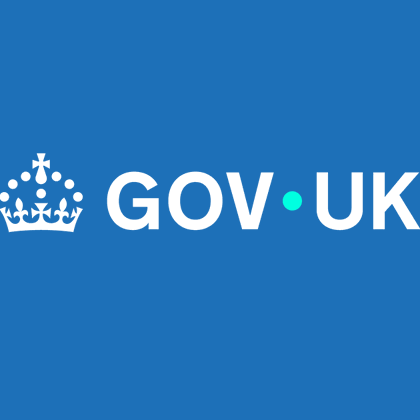Mathematics
Subject intent
Studying mathematics at HSAEL empowers students to become analytical thinkers, confident problem-solvers, and future-ready leaders. In a world increasingly shaped by data, technology, and complex systems, a rigorous mathematics education equips students with the tools to model real-world problems, make informed decisions, and thrive in any academic or professional field.
Mathematics takes students out of their comfort zone (and shows growth) by challenging them to reason abstractly, persevere through multi-step problems, and apply logic in unfamiliar contexts. From manipulating algebraic expressions and solving equations to modelling motion and interpreting data, pupils develop resilience, precision, and intellectual curiosity.
It helps students tackle social injustice (and demonstrate responsibility) by enabling them to understand financial systems, interpret statistics, and challenge misinformation. Mathematical literacy empowers students to participate fully in society and make responsible, evidence-based decisions that affect their communities and the wider world.
Mathematics promotes ambition by opening doors to elite universities and high-impact careers in engineering, economics, data science, architecture, and beyond. It provides a universal language that transcends background and geography, offering students a pathway to global opportunities and leadership.
It celebrates diversity (compassion) by highlighting the contributions of mathematicians from a wide range of cultures and eras. Pupils learn that mathematical thinking is a shared human endeavour, and that every student can find a place within it.
Mathematics develops independence (excellence) by teaching students how to reason, model, and solve problems systematically. Pupils learn to test hypotheses, evaluate solutions, and refine their methods—skills that are essential for success in further study and in life.
This subject is particularly important at HSAEL because...
Mathematics is a gateway subject that underpins success across the curriculum and beyond. Research shows that strong mathematical skills are linked to higher earnings, greater career flexibility, and increased social mobility. At HSAEL, we believe that every student deserves access to the powerful knowledge that mathematics provides. Our curriculum is designed to build fluency, deepen understanding, and foster a love of learning that lasts a lifetime.
Endpoint:
Mathematics at Cambridge – AAA. This highly competitive course requires mastery of pure and applied mathematics, including fluency in algebra, calculus, mechanics, and problem-solving. Students must demonstrate deep conceptual understanding, mathematical creativity, and a strong performance in the Sixth Term Examination Paper (STEP). Success requires not only academic excellence but also a passion for exploring mathematics beyond the classroom.
Golden Threads in Mathematics
(Developed from university courses, A Level specifications, GCSE content, and the KS2 programme of study)
1. Deep Knowledge and Understanding of Mathematical Concepts and Structures
Pupils develop a secure understanding of number, algebra, geometry, statistics, and calculus. They explore mathematical relationships, patterns, and structures, building fluency in core concepts such as place value, operations, equations, functions, and transformations. This thread ensures pupils can confidently access increasingly abstract and complex ideas.
2. Application of Mathematical Methods in Theoretical and Real-World Contexts
Pupils apply mathematical techniques to solve problems in both abstract and applied settings. From solving equations and modelling motion to interpreting financial data and geometric reasoning, pupils learn to transfer their knowledge across topics and disciplines, including science, technology, and economics.
3. Analysis, Interpretation, and Evaluation of Mathematical Information
Pupils learn to interpret graphs, diagrams, and data sets, and to evaluate the validity of mathematical arguments. They develop the ability to reason logically, critique solutions, and justify their methods. This thread supports critical thinking and prepares pupils for mathematical modelling and proof.
4. Handling and Processing Quantitative and Algebraic Data
Pupils manipulate numerical and algebraic data with precision, using tools such as indices, surds, standard form, and statistical measures. They calculate with accuracy, estimate sensibly, and use calculators and technology appropriately. This thread supports fluency in problem-solving and data analysis.
5. Development and Refinement of Mathematical Reasoning and Problem-Solving Strategies
Pupils design, test, and refine strategies to solve increasingly complex problems. They use iterative methods, construct formal proofs, and apply calculus and mechanics to model real-world systems. This thread fosters independence, resilience, and the ability to approach unfamiliar problems with confidence.
KS2 Starting Point
At KS2, pupils develop foundational fluency in number, shape, and data. They learn to perform calculations using the four operations, understand place value, and work with fractions, decimals, and percentages. Pupils begin to explore patterns, sequences, and simple algebraic thinking. They interpret charts and graphs, measure angles and lengths, and solve problems in real-life contexts. These early experiences build the conceptual understanding and confidence needed to access the more abstract and interconnected mathematics of KS3 and beyond.
At HSAEL, we purposefully begin Year 7 with a strong focus on numeracy. This ensures that all pupils secure a solid foundation in number and place value, which underpins success across all areas of mathematics. By embedding fluency and confidence early, we enable pupils to access more complex topics such as algebra, geometry, and data handling with greater ease and depth.
|
Year |
Autumn 1 |
Autumn 2 |
Spring 1 |
Spring 2 |
Summer 1 |
|
Year 7 |
Place Value, addition and subtraction |
Multiplication, division and order of operations. |
Indices and negatives. |
Factors, multiples and prime numbers. |
Fractions |
|
Year 8 |
Manipulating terms
Simplifying expressions |
Algebraic fractions |
Forming expressions and algebraic proof |
Solving equations and using formulae |
Inequalities |
|
Year 9 |
Angles |
Euclidean geometry |
Similarity and congruence |
Pythagoras theorem and trigonometry |
Area of 2D shapes |
|
Year 10 Foundation |
Algebraic Expressions, Simplification and Number Properties |
FDP & Calculations with Percentages and Statistical Diagrams & Averages |
Rounding, Accuracy & Use of Calculator and Standard Form |
Ratio & Proportion and Probability |
Substitution, Linear Equations & Inequalities and Shape & Angles |
|
Year 10 Higher |
Algebraic methods and Powers & roots |
Ratio & proportion and Statistics |
Angle rules, Pythagoras’ theorem, trigonometry and circle theorems
Surds |
Equations of straight lines & circles and factorising & simplifying algebraic fractions. |
Quadratic equations and simultaneous equations. |
|
Year 11 Foundation |
Statistics and averages. |
Money problems , area, perimeter and 3D shapes. |
Sequences, scale factors, Pythagoras’ theorem and trigonometry. |
Fractions and probability |
Coordinates, linear graphs and quadratic graphs. |
|
Year 11 Higher |
Compound area, trigonometry, algebra in geometry, circles and sectors. |
Sine & cosine rule, probability and bounds & accuracy |
Units & conversions, compound measures & real-life graphs, similarity in geometry |
3D geometry and trigonometry, sequences, iteration and algebraic proof. |
Recurring decimals and fractions, functions, composite and inverse functions. |
|
Year 12 |
Algebra, indices, graphs, sampling and the large data set |
Graphs, Polynomials, Proof and Trigonometry, Averages, Linear Interpolation, Measure of Spread, Statistical Graphs, Probability, Correlation and Probability Distributions |
Trigonometry, vectors and differentiation, binomial distribution, hypothesis testing and modelling. |
Differentiation and integration, SUVAT, forces and motion & variable acceleration. |
Circles, Exponentials and Logarithms and Functions and Graphs (Y13). |
|
Year 13 |
Trigonometric identities and parametric equations, regression, probability and normal distribution. |
Further differentiation, parametric differentiation, newtons, laws, forces and motion in 2D. |
Limits, integration and proof. |
Projectiles, forces and modelling in mechanics. |
Revision: Reflect, Review and Reteach |
|
For GCSE, Mathematics follows the AQA exam board. See the specification here:https://www.aqa.org.uk/subjects/mathematics/gcse/mathematics-8300/specification-at-a-glance |
|
For A-Level, Mathematics follows the Edexcel exam board. See the specification here: https://qualifications.pearson.com/content/dam/pdf/A%20Level/Mathematics/2017/specification-and-sample-assesment/a-level-l3-mathematics-specification-issue4.pdf |
How does the study of Maths link to future careers?
The study of Maths equips students with problem-solving, logical reasoning, and analytical skills essential for careers in engineering, finance, technology, data analysis, medicine, and scientific research. At HSAEL, Maths prepares students for success in STEM and other fields, ensuring they are well-equipped for the modern workforce.
How does Maths link to the extra-curricular provision at HSAEL?
At HSAEL, Maths links to extra-curricular activities through the UKMT Challenge, Federation Masterclasses, and competitions. These opportunities enhance problem-solving skills, deepen mathematical understanding, and foster teamwork, preparing students for future STEM careers.





















